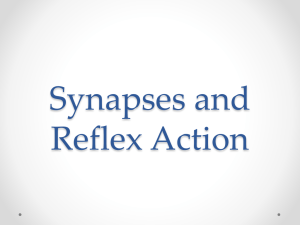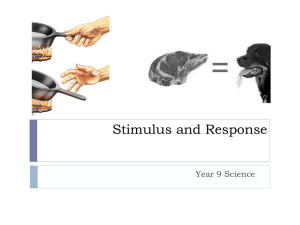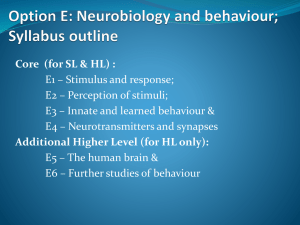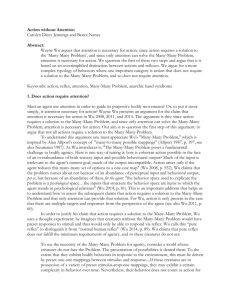Name: Date: Period:______ 8th Grade Science Quarter 2 Final
advertisement
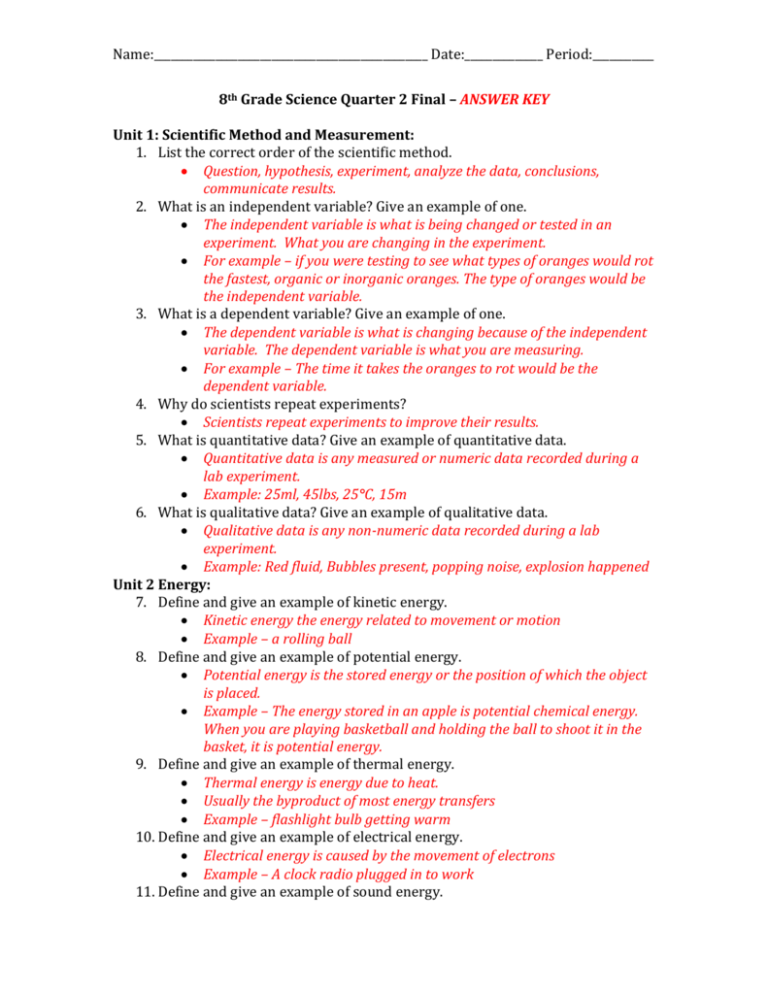
Name:_________________________________________________ Date:______________ Period:___________ 8th Grade Science Quarter 2 Final – ANSWER KEY Unit 1: Scientific Method and Measurement: 1. List the correct order of the scientific method. Question, hypothesis, experiment, analyze the data, conclusions, communicate results. 2. What is an independent variable? Give an example of one. The independent variable is what is being changed or tested in an experiment. What you are changing in the experiment. For example – if you were testing to see what types of oranges would rot the fastest, organic or inorganic oranges. The type of oranges would be the independent variable. 3. What is a dependent variable? Give an example of one. The dependent variable is what is changing because of the independent variable. The dependent variable is what you are measuring. For example – The time it takes the oranges to rot would be the dependent variable. 4. Why do scientists repeat experiments? Scientists repeat experiments to improve their results. 5. What is quantitative data? Give an example of quantitative data. Quantitative data is any measured or numeric data recorded during a lab experiment. Example: 25ml, 45lbs, 25°C, 15m 6. What is qualitative data? Give an example of qualitative data. Qualitative data is any non-numeric data recorded during a lab experiment. Example: Red fluid, Bubbles present, popping noise, explosion happened Unit 2 Energy: 7. Define and give an example of kinetic energy. Kinetic energy the energy related to movement or motion Example – a rolling ball 8. Define and give an example of potential energy. Potential energy is the stored energy or the position of which the object is placed. Example – The energy stored in an apple is potential chemical energy. When you are playing basketball and holding the ball to shoot it in the basket, it is potential energy. 9. Define and give an example of thermal energy. Thermal energy is energy due to heat. Usually the byproduct of most energy transfers Example – flashlight bulb getting warm 10. Define and give an example of electrical energy. Electrical energy is caused by the movement of electrons Example – A clock radio plugged in to work 11. Define and give an example of sound energy. Name:_________________________________________________ Date:______________ Period:___________ Sound energy is the energy of vibrations Example – Beating of a drum, song being played from your ipod. 12. Define and give an example of chemical energy. Energy that is available for release from chemical reactions Example – An apple will release energy to whoever eats it 13. Define and give an example of nuclear energy. Energy produced from splitting or fusing atoms Energy produced from a nuclear power plant 14. Draw and label all of the parts of a wave. 15. Define wavelength. A wave is a traveling disturbance that carries energy from one place to another 16. Define frequency. Frequency is number of complete wavelengths in a given point. 17. Explain the relationship between wavelength and frequency. As a wavelength increases in size, its frequency and energy decrease. 18. How does energy waves relate to light? It is the wavelength of visible light waves that determines their color. Name:_________________________________________________ Date:______________ Period:___________ Unit 3 Resources 19. What would happen if we were go cut down all the trees in a forest and build buildings in their place? If we cut down all of the trees in a forest and build buildings in their place, then there would be less carbon dioxide used during photosynthesis, and less oxygen is released into the air. 20. What would happen to renewable resources if the population increases? As the population increases pollution and usage of the resources too fast can cause resources to become limited. Use the following graph in order to answer the following questions. 21. What has increased over time? The global temperature has increased over time 22. What levels have increase over time? The carbon dioxide levels have increased over time 23. Is there a relationship evident in the graph? As the carbon dioxide levels increase, the global temperature increases as well. 24. How is oil produced? Oil is formed from decayed ancient plants and animals from millions of years ago 25. Why is it so important to conserve oil? Name:_________________________________________________ Date:______________ Period:___________ It is important to conserve oil because it takes millions of years to make oil 26. How is coal produced? Coal is formed from decayed ancient plants from millions of years ago 27. Why is it so important to conserve coal? It is important to conserve coal because it takes millions of years to make it. 28. Define conservation. Conservation is using natural resources wisely and not contributing to pollution of the land, air or water. Human activities can benefit the environment and help preserve resources. Unit 4 Climate and Natural Hazards 29. What is weather? Weather is what is happening outside right now 30. What is climate? Climate is a pattern of weather changes over time 31. How could global warming affect our climate? Global warming can affect our climate by increasing temperatures, which can alter ocean currents, which can cause more violent storms. 32. What is the main destructive force behind a Tsunami? The main destructive force behind a tsunami is the wave’s momentum and wavelength 33. What are the major factors that determine the effects of an earthquake? The major factors that determine the effects of an earthquake are the distance from the focus, distance from the epicenter and the local geology. 34. Where are volcanoes, earthquakes and tsunamis most likely to occur? Volcanoes, earthquakes and tsunamis are most likely to occur where tectonic plates meet other tectonic plates 35. What is the pacific ring of fire? The Ring of Fire is a string of volcanoes and sites of seismic activity, or earthquakes, around the edges of the Pacific Ocean. 36. When do most tornadoes occur in the United States? Most tornadoes occur from April through June in the U.S. 37. What should you do in the event of a tornado? In the event of a tornado warning, you should take cover in the lowest interior room or a basement. 38. What should you do in the event of a volcanic eruption? In the event of a volcanic eruption, you should evacuate the area and take shelter. Unit 5 Information Processing 39. What is the largest part of the brain? The largest part of the brain is the cerebrum 40. Describe the major functions of the nervous system. Name:_________________________________________________ Date:______________ Period:___________ The major functions of the nervous system is to receive, process and interpret incoming information, sends out messages to muscles, glands and organs 41. What are the functions of the CENTRAL nervous system? The functions of the CNS are sensory input, integration, and motor output 42. What are the five main parts of the neuron? The five main parts of the neuron are the dendrites, cell body, axon, myelin sheath, synaptic terminal 43. What is an innate behavior? Give an example of one. An innate behavior is an instinct or inborn behavior. i. Example – A spider weaving a web 44. What is a learned behavior? Give an example of one. A learned behavior is a change in behavior that results from experience. i. Example – Learning how to write with a pencil 45. How do you know if an organism is displaying a innate behavior? All individuals will perform the behavior the same way each time. 46. What is a reflex? Give an example of one. A reflex is an involuntary, automatic response to a stimulus. Example – Knee jerk, blink reflex and pupils adjusting to light 47. What is a stimulus? Give an example of an external stimulus and an internal stimulus. A stimulus is a change in an organisms body or environment. External stimulus can be the bright sun – you would respond by squinting Internal stimulus can be hunger – you would respond by eating something 48. What is a response? Give an example of one. A response is a reaction to a stimulus i. Example – Plants growing towards the sun (sunlight is the stimulus) 49. What is homeostasis? The regulation of steady, life-maintaining conditions inside an organism, despite changes in its environment…keeping the body in balance. Example – Body temperature, regulating breathing, and blood sugar levels 50. Define fight or flight. Fight or flight is caused by the endocrine system releasing the hormone adrenalin into your bloodstream. Extended Response Study Guide: How does the nervous system send messages (impulses) from your skin to your muscles? Name:_________________________________________________ Date:______________ Period:___________ A tack pierces your finger, the sensory neurons receives the pain impulse. The impulse goes to the dendrites in the form of a chemical neurotransmitter, the impulse is sent from the dendrites to the axon. The axon converts the chemical neurotransmitters to an electrical impulse. The electrical impulse is changed back into a chemical neurotransmitter, where it is released to the next dendrite from the synaptic terminal. This impulse travels through a path of sensory neurons to the spinal cord. The spinal cord interprets the message and sends an impulse to the motor neurons. The motor neurons dendrites receive the neurotransmitter impulse, send it to the axon, then out the synaptic terminal to the next motor neuron. The message follows a path of motor neurons to the muscle controlling the finger, to move the finger off of the tack. This happens very rapidly! How is a reflex different from a response? A reflex is different from a response because a reflex involves a simple nerve pathway called a reflex arc – to the spinal cord and straight back. This is an involuntary response to a stimulus. A response is a voluntary reaction to a stimulus. This decision involves the brain and requires the brain to make a decision about what your reaction will be.

